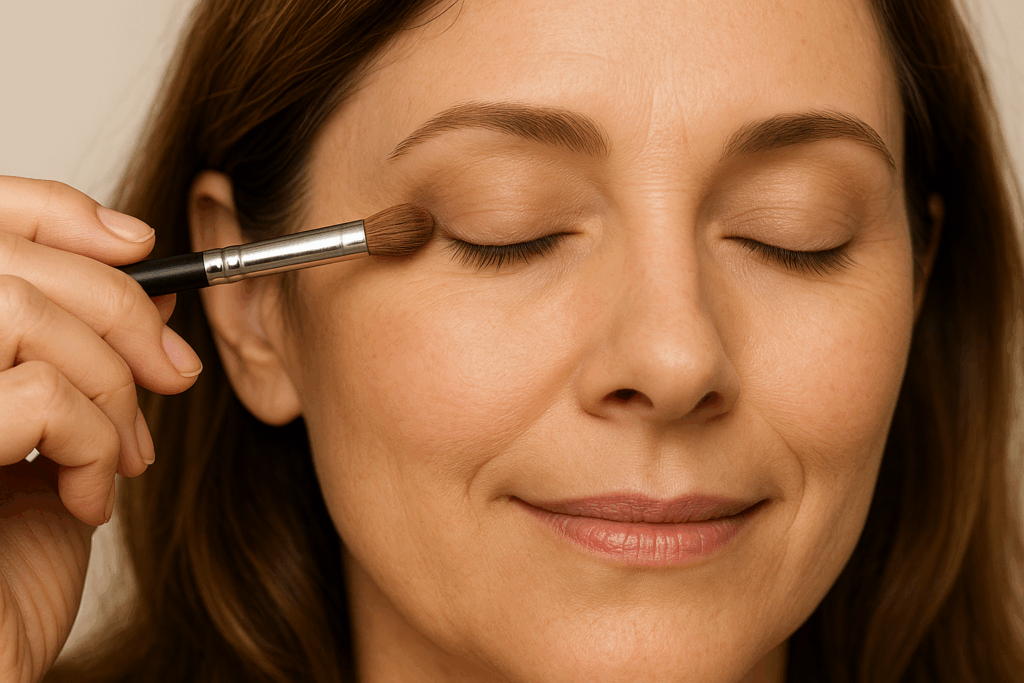Heavy, hooded upper eyelids can make you look tired—even when you’re well‑rested. Upper blepharoplasty (upper eyelid surgery) removes excess skin and precisely refines fat and muscle to reopen the eye and restore a natural crease. At Dr. Richard Peck’s practice in Northern New Jersey, our goal is simple: a brighter look that still looks like you.
Are You a Candidate?
You may be a good fit for upper bleph surgery if you have:
- Skin resting on or obscuring the lash line/crease
- Makeup transfer onto the upper lids due to hooding
- A “tired” look that doesn’t match how you feel
- Difficulty with peripheral vision (in select functional cases)
Not sure if your brow position is part of the issue? We’ll evaluate lid skin, fat, muscle, and brow descent (sometimes a brow lift treats the root cause).

What Upper Blepharoplasty Can Improve
- Excess upper‑lid skin (dermatochalasis)
- Bulges from prominent fat pads
- Asymmetry in the upper lid crease
- Makeup application and lid definition
What it won’t fix alone: forehead heaviness, pronounced crow’s feet, significant brow ptosis.
How Dr. Peck Performs the Procedure
- Anesthesia: often local anesthesia with oral sedation; IV sedation may be used based on your plan.
- Incision: concealed in the natural upper eyelid crease.
- Refinement: conservative skin removal, tailored fat contouring, and careful muscle management to avoid hollowness.
- Time in office: typically under two hours; you go home the same day with detailed aftercare.
The surgical plan is individualized—aiming for lid harmony with the brow and lower lid for a naturally refreshed gaze.
Upper Bleph Before & After: What to Look For
When reviewing upper bleph before and after photos, focus on:
- A visible but natural crease (not over‑elevated)
- Eyes that look brighter without being “over‑opened”
- Symmetry that respects your natural anatomy
- Fading, well‑placed scars within the crease
We prioritize photographs at neutral gaze and gentle smile so you can appreciate results in motion.
Recovery Timeline (Typical)
- Days 0–2: swelling, tightness, light bruising; sleep head‑elevated, use cold compresses.
- Days 3–7: stitches (if placed) usually removed around a week; bruise colors lighten.
- Days 7–10: many patients feel comfortable returning to desk work and social settings.
- Weeks 2–6: residual swelling continues to settle; incisions mature and fade over months.
You’ll receive instructions on lubrication, activity limits, and when to resume contacts and makeup.
Longevity of Results
Upper blepharoplasty often delivers results that last for many years. Natural aging continues, but most patients enjoy long‑standing improvement with simple maintenance—sun protection and healthy skincare habits.

Safety & Potential Risks
Temporary dryness, bruising, swelling, or asymmetry can occur. Less common risks (infection, visible scarring, lagophthalmos) are reviewed during consultation. Choosing a board‑certified plastic surgeon focused on conservative technique helps reduce risks.
Thoughtful Complements & Alternatives
- Brow lift when brow descent is the main culprit
- Laser resurfacing for fine lines/texture around the lids
- Neuromodulators for crow’s feet
We’ll guide you toward the least invasive plan that meets your goals.

Ready to See Your Eyes Again?
Meet with Dr. Peck in West Orange or Cedar Knolls to discuss whether upper blepharoplasty is right for you and to review customized before‑and‑after examples that match your anatomy.
Frequently Asked Questions
Will I still look like myself?
Yes—the aim is a rested version of you, preserving your natural eye shape and expression.
How long is recovery? When can I work again?
Plan for about 7–10 days before most desk work or social events; bruising and swelling continue to fade over several weeks.
When can I wear contacts or eye makeup?
Contacts typically after 1–2 weeks, once irritation has resolved. Makeup after incisions have sealed and stitches are removed—your aftercare sheet will give exact timing.
Can upper blepharoplasty improve vision?
In some patients, excess skin blocks peripheral vision. If testing shows a functional impairment, surgery may help; we’ll advise during consultation.
How visible are the scars?
Incisions are hidden in the natural crease and usually fade to a thin line.
Is it ever combined with lower eyelid surgery?
Yes—when appropriate, combined procedures can be done the same day for overall balance.
Does insurance cover upper eyelid surgery?
Cosmetic cases are self‑pay. Functional coverage may be considered if visual field testing meets criteria; we can guide you through evaluation.
Explore the series:
• Blepharoplasty Guide: Upper vs. Lower, Candidacy & Recovery
• Lower Blepharoplasty for Under‑Eye Bags: Techniques & Recovery
• Non‑Surgical Eyelid Rejuvenation: What Works—and When Surgery Wins
Educational content only; not medical advice. Please book a consultation for personalized recommendations.